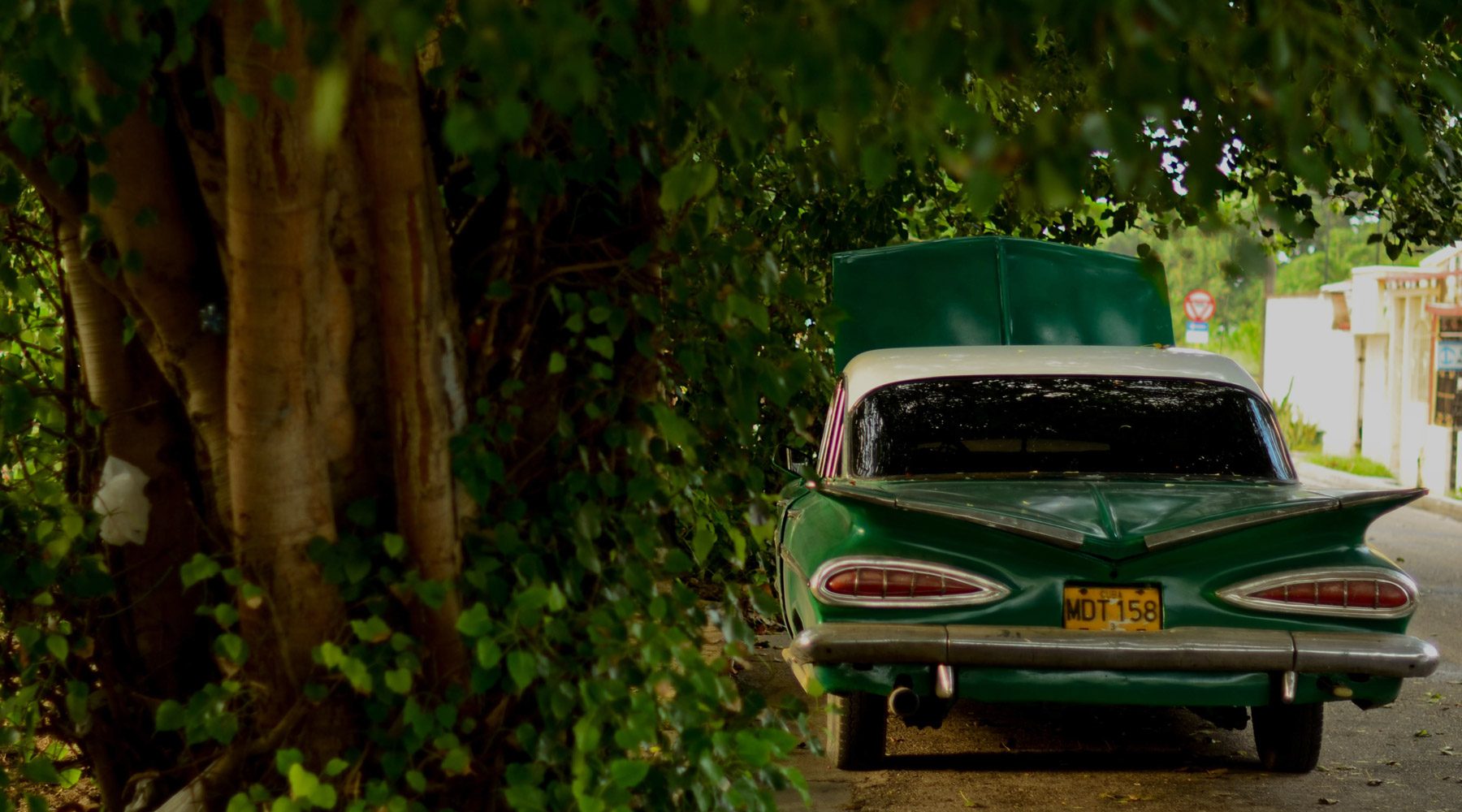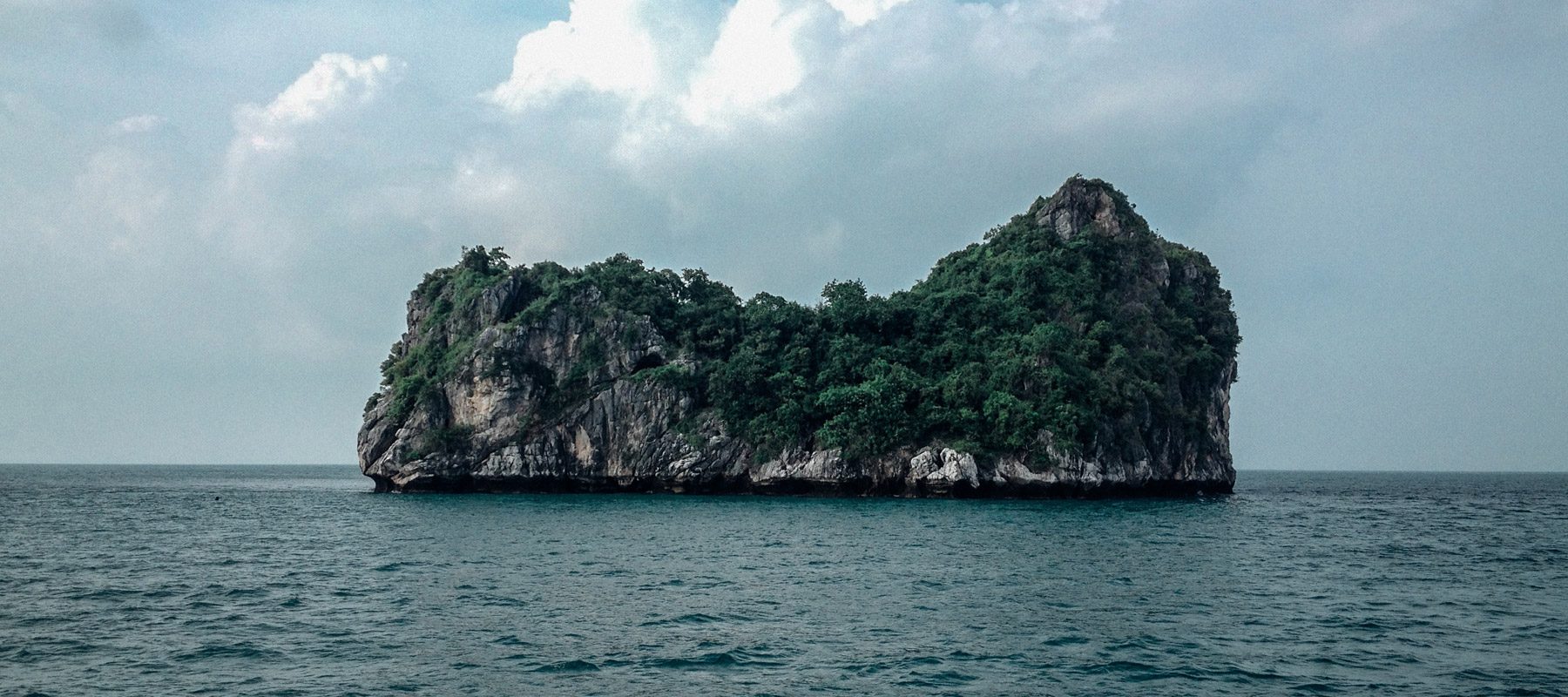6 Apps For Speeding Up Your Workflow

Any great increase in the amount of physical or mental work results in a feeling of weariness which is usually sufficient to cause us to return to our habitual amount of expenditure of energy. Our system is, however, wonderful in its capacity to adjust itself to changed demands which come upon it, whether these demands be in the nature of changes in temperature, in stimulants, in nourishment, or in the expenditure of physical or mental energy.
There is, of course, a limit to possible human achievements. There are resources which may not be exhausted without serious injury to health. Those who accomplish most, however, compare favorably with others in length of days and retention of health.
While overwork has its place among the things which reduce energy and shorten life, it is my opinion that overwork is not so dangerous or so common as is ordinarily supposed.
In not a few industries, the dominant house or firm has for its head a man past seventy who still keeps a firm and vigorous grip on the business: men like Richard T. Crane of Chicago, E. C. Simmons of St. Louis, and James J. Hill, whose careers are records of intense industry and absorbed devotion to the work in hand.
Many persons confuse overwork with what is really underwork accompanied with worry or unhygienic practices.
A recent writer on sociology calls attention to the fact that nervous prostrations and general breakdowns are most common among those members of society who achieve the least and who may be regarded as parasites. Exercise both of brain and of muscle is necessary for growth and for health.
Creating An Inviting Space For Client Meetings

When an individual succeeds in tapping his reserve energies, others marvel at the tremendous tasks he accomplishes. They judge in terms of superficial energy, and for such the results would, of course, be impossible, even though many of the admiring spectators could actually equal or excel the deed.
Consider for a moment the work achieved by Mr. Edward Payson Weston who recently walked the entire distance from New York to San Francisco without halt or rest in one hundred and four days. Throughout the entire journey Mr. Weston covered about fifty miles daily, once attaining the remarkable distance of eighty-seven miles in twenty-four hours. Though Mr. Weston is seventy years of age, at the close of the walk he seemed to be relatively free from exhaustion and undaunted in spirit.
The work accomplished by such men as Gladstone and Roosevelt is incomprehensible to most of us who have never undertaken more than puny tasks. These men retain their strength and in no way seem to be undermining their health by the accomplishment of their Herculean labors. Body and mind seem to respond to the demands made upon them. Their periods of sleep and their vacations seem to be no more than the hours and days of rest required by those of us who accomplish infinitely less.
Now Is The Time To Rebrand

The modern business man is the true heir of the old magicians. Every thing he touches seems to increase ten or a hundredfold in value and usefulness. All the old methods, old tools, old instruments have yielded to his transforming spell or else been discarded for new and more effective substitutes. In a thousand industries the profits of to-day are wrung from the wastes or unconsidered trifles of yesterday.
The only factor which has withstood this wizard touch is man himself. Development of the instruments of production and distribution has been so great it can hardly be measured: the things themselves have been so changed that few features of their primitive models have been retained.
Our railroad trains, steamships, and printing presses preserve a likeness more apparent than actual. Our telephones, electric lights, gas engines, and steam turbines, our lofty office buildings and huge factories crowded with wonderful automatic machinery are creations of the generation of business men and scientists still in control of them.
By comparison the increase in human efficiency during this same period (except where the worker is the slave of the machine, compelled to keep pace with it or lose his place) has been insignificant.
Reasons for this disproportion are not lacking. The study of the physical antedates the study of the mental always. In the history of the individual as well as of nations, knowledge of the psychical has dragged far behind mastery of tangible objects. We come in contact with our physical environment and adjust ourselves to it long before we begin to study the *acts by which we have been able to control objects around us.
It was inevitable, therefore, that attention should have been concentrated upon the material and mechanical side of production and distribution. Results there were so tangible, so easily figured. For example, if the speed of a drill or the strokes of a punch press were multiplied, the increase would be easily recognized. The whole country, too, was absorbed in invention, in the development of tools to accomplish what had always required hand labor. The effort was not so much to increase the efficiency of the individual worker— though many wise and far-sighted employers essayed studies and experiments with varying success—as to displace the human factor altogether.
As the functions and limitations of machinery have become clearer in recent years, business men have generally recognized the importance of the human factor in making and marketing products. Selecting and handling men is of much more significance to-day than ever before in the history of the world —the more so as organizations have increased in size and scope and the individual employee is farther removed from the head and assigned greater responsibilities.
It is not a difficult task to build and equip a factory, to choose and stock a store. The problems of power and its transmission come nearer solution every day. Physics and chemistry have revealed the secrets of raw materials. For any given service, the manufacturer can determine the cheapest and most suitable metal, wood, or fabric which will satisfy his requirements, and the most economical method of treating it.
Of the elements involved in production or distribution, the human factor is to-day the most serious problem confronting the business man. The individual remains to be studied, trained, and developed—to be brought up to the standard of maximum results already reached by materials and processes.
Few employers can gather a force of efficient workers and keep them at their best. Not only is it difficult to select the right men but it is even harder to secure top efficiency after they are hired. Touching this, there will be no dispute. Experts in shop management go even farther. F. W. Taylor, who has made the closest and most scientific study, perhaps, of actual and potential efficiency among workers, declares that:—
“A first-class man can, in most cases, do from two to four times as much as is done on the average.”
“This enormous difference,” Mr. Taylor goes on to say, “exists in all the trades and branches of labor investigated, from pick- and-shovel men all the way up the scale to machinists and other skilled workmen. The multiplied output was not the product of a spurt or a period of overexertion; it was simply what a good man could keep up for a long term of years without injury to his health, become happier, and thrive under.”
Ask the head of any important business what is the first qualification of a foreman or manager, and he will tell you “ability to handle men.”
Men who know how to get maximum results out of machines are common; the power to get the maximum of work out of subordinates or out of yourself is a much rarer possession.
Yet this power is not necessarily a sixth sense or a fixed attribute of personality. It is based on knowledge of the workings of the other man’s mind, either intuitive or acquired. It is the purpose of this and succeeding chapters to consider some of the aspects of human nature that can be turned to advantage in the cultivation of individual efficiency and the elimination of lost motion and wasted effort.
The Door In The Wall

One confidential evening, not three months ago, Lionel Wallace told me this story of the Door in the Wall. And at the time I thought that so far as he was concerned it was a true story.
He told it me with such a direct simplicity of conviction that I could not do otherwise than believe in him. But in the morning, in my own flat, I woke to a different atmosphere, and as I lay in bed and recalled the things he had told me, stripped of the glamour of his earnest slow voice, denuded of the focussed shaded table light, the shadowy atmosphere that wrapped about him and the pleasant bright things, the dessert and glasses and napery of the dinner we had shared, making them for the time a bright little world quite cut off from every-day realities, I saw it all as frankly incredible. “He was mystifying!” I said, and then: “How well he did it!. . . . . It isn’t quite the thing I should have expected him, of all people, to do well.”
Afterwards, as I sat up in bed and sipped my morning tea, I found myself trying to account for the flavour of reality that perplexed me in his impossible reminiscences, by supposing they did in some way suggest, present, convey—I hardly know which word to use—experiences it was otherwise impossible to tell.
The Key To A Quality Restoration

From the Pacific to the Atlantic by the Lincoln Highway, with California and the Virginias and Maryland thrown in for good measure! What a tour it has been!
As we think back over its miles we recall the noble pines and the towering Sequoias of the high Sierras of California; the flashing water-falls of the Yosemite, so green as to be called Vernal, so white as to be called Bridal Veil; the orchards of the prune, the cherry, the walnut, the olive, the almond, the fig, the orange, and the lemon, tilled like a garden, watered by the hoarded and guarded streams from the everlasting hills; and the rich valleys of grain, running up to the hillsides and dotted by live oak trees.

We recall miles of vineyard under perfect cultivation. We see again the blue of the Pacific and the green of the forest cedars and cypresses. High Lake Tahoe spreads before us, with its southern fringe of emerald meadows and forest pines, and its encircling guardians, lofty and snow-capped. The high, grey-green deserts of Nevada, Utah, and Wyoming stretch before us once more, and we can smell the clean, pungent sage brush. We are not lonely, for life is all about us. The California quail and blue-jay, the eagle, the ground squirrel, the gopher, the coyote, the antelope, the rattlesnake, the big ring snake, the wild horse of the plains, the jack rabbit, the meadow lark, the killdeer, the red-winged blackbird, the sparrow hawk, the thrush, the redheaded wood-pecker, the grey dove, all have been our friends and companions as we have gone along. We have seen them in their native plains and forests and from the safe vantage point of the front seat of our motor car.
The lofty peaks of the Rockies have towered before us in a long, unbroken chain as we have looked at them from the alfalfa fields of Colorado.
10 Sailing Destinations Sure To Inspire Awe

In the time of Spanish rule, and for many years afterwards, the town of Sulaco—the luxuriant beauty of the orange gardens bears witness to its antiquity—had never been commercially anything more important than a coasting port with a fairly large local trade in ox-hides and indigo.
 The clumsy deep-sea galleons of the conquerors that, needing a brisk gale to move at all, would lie becalmed, where your modern ship built on clipper lines forges ahead by the mere flapping of her sails, had been barred out of Sulaco by the prevailing calms of its vast gulf. Some harbours of the earth are made difficult of access by the treachery of sunken rocks and the tempests of their shores. Sulaco had found an inviolable sanctuary from the temptations of a trading world in the solemn hush of the deep Golfo Placido as if within an enormous semi-circular and unroofed temple open to the ocean, with its walls of lofty mountains hung with the mourning draperies of cloud.
The clumsy deep-sea galleons of the conquerors that, needing a brisk gale to move at all, would lie becalmed, where your modern ship built on clipper lines forges ahead by the mere flapping of her sails, had been barred out of Sulaco by the prevailing calms of its vast gulf. Some harbours of the earth are made difficult of access by the treachery of sunken rocks and the tempests of their shores. Sulaco had found an inviolable sanctuary from the temptations of a trading world in the solemn hush of the deep Golfo Placido as if within an enormous semi-circular and unroofed temple open to the ocean, with its walls of lofty mountains hung with the mourning draperies of cloud.
On one side of this broad curve in the straight seaboard of the Republic of Costaguana, the last spur of the coast range forms an insignificant cape whose name is Punta Mala. From the middle of the gulf the point of the land itself is not visible at all; but the shoulder of a steep hill at the back can be made out faintly like a shadow on the sky.
The Party From Gibbet Island

Ellis Island, in New York harbor, once bore the name of Gibbet Island, because pirates and mutineers were hanged there in chains. During the times when it was devoted to this fell purpose there stood in Communipaw the Wild Goose tavern, where Dutch burghers resorted, to smoke, drink Hollands, and grow fat, wise, and sleepy in each others’ company.
The plague of this inn was Yan Yost Vanderscamp, a nephew of the landlord, who frequently alarmed the patrons of the house by putting powder into their pipes and attaching briers beneath their horses’ tails, and who naturally turned pirate when he became older, taking with him to sea his boon companion, an ill-disposed, ill-favored blackamoor named Pluto, who had been employed about the tavern. When the landlord died, Vanderscamp possessed himself of this property, fitted it up with plunder, and at intervals he had his gang ashore,—such a crew of singing, swearing, drinking, gaming devils as Communipaw had never seen the like of; yet the residents could not summon activity enough to stop the goings-on that made the Wild Goose a disgrace to their village. The British authorities, however, caught three of the swashbucklers and strung them up on Gibbet Island, and things that went on badly in Communipaw after that went on with quiet and secrecy.
The pirate and his henchmen were returning to the tavern one night, after a visit to a rakish-looking vessel in the offing, when a squall broke in such force as to give their skiff a leeway to the place of executions. As they rounded that lonely reef a creaking noise overhead caused Vanderscamp to look up, and he could not repress a shudder as he saw the bodies of his three messmates, their rags fluttering and their chains grinding in the wind.
How The Piano Came To Be

From the dried sinews stretched across the shell of a dead tortoise to the concert-grand piano of the present day is a far flight. Yet to this primitive source, it is said, may be traced the evolution of the stringed instrument which reached its culmination in the piano.
The latter has been aptly called “the household orchestra,” and in tracing its origin one must go far back into the annals of the past. If we accept the Bible as history, and it is the greatest of all histories, the stringed instrument is of very ancient date. It is recorded that the ambassadors who came to the court of Saul played upon their nebels, and that David, the sweet singer of Israel, wooed the king from his sadness by singing to his harp. We must go back to the civilization of ancient Egypt, more than five hundred years before that morning nearly two thousand years ago when, it is written, the angelic choir chanted above the historic manger the glorious message, “Peace on earth, good will to men,” and the morning stars sang together.
In the olden times the Greeks laid claim to everything which bespoke culture and progress. The pages of ancient history record no other one thing so persistently as “the glory that was Greece.” And so they tell of the time when —
“Music, heavenly maid, was young,
And yet in ancient Greece she sung!”
It is now generally conceded, however, that it was not in Greece but in ancient Egypt that art, music, and the sciences in general were born. That the Egyptians had stringed instruments is unquestionable. Away back in the year 525 B.C. Cambyses subdued the land. He overthrew the temples in the ruins of which have been found the records of musical instruments dating from the very earliest times. But the priests who guarded the temples were slain, and every vestige of what might have helped to determine the origin of the stringed instrument, out of which, later, the piano was evolved, as well as the names of those who wrought andendeavored to construct instruments which would give forth music, was forever lost.
The History of Fashion

A hard fate has condemned human beings to enter this mortal sphere without any natural covering, like that possessed by the lower animals to protect them from the extremes of heat and cold. Had this been otherwise, countless myriads, for untold ages, would have escaped the tyrannical sway of the goddess Fashion, and the French proverb, il faut souffrir pour être belle, need never have been written.
 The costume of our progenitors was chiefly remarkable for its extreme simplicity; and, as far as we can gather, no difference in design was made between the sexes. A few leaves entwined by the stalks, the feathers of birds, the bark of trees, or roughly-dressed skins of animals were probably regarded by beaux and belles of the Adamite period as beautiful and appropriate adornments for the body, and were followed by garments made from plaited grass, which was doubtless the origin of weaving, a process which is nothing more than the mechanical plaiting of hair, wool, flax, &c. In many remote districts these primitive fashions still prevail, as, for example, in Madras, where, at an annual religious ceremony, it is customary for the low caste natives to exchange for a short period their usual attire for an apron of leaves. In the Brazilian forests the lecythis, or “shirt tree,” is to be found, from which the people roll off the bark in short lengths, and, after making it pliable in water, cut two slits for the arm-holes and one for the neck, when their dress is complete and ready for use. The North American Indian employs feathers for purposes of the toilet, and many African tribes are noted for their deftly-woven fabrics composed of grass and other vegetable fibres, while furs and skins are essential articles of dress in Northern latitudes. Perhaps the earliest specimen of a modiste’s bill in existence has recently been found on a chalk tablet at Nippur, in Chaldea. The hieroglyphics record ninety-two robes and tunics: fourteen of these were perfumed with myrrh, aloes and cassia. The date of this curious antique cannot be less than two thousand eight hundred years before the Christian era. In ancient times it must be remembered that the principal seats of civilisation were Assyria and Egypt, and upon these countries Western nations depended for many of the luxuries of life. The Jews derived their fine fabrics from the latter place, which was particularly noted for its linen manufactures and for magnificent embroideries, of which the accompanying illustration will give some idea. Medes and Babylonians, of the highest class, partially arrayed themselves in silk, which cost its weight in gold, and about the time of Ezekiel (B.C. 594) it is known to have been used in the dress of the Persians. It is a remarkable circumstance that this animal product was brought to the West manufactured in cloth, which was only half silk; and it is said the plan was devised of unravelling the stuff, which was rewoven into cloth of entire silk. Owing to its high price, the Romans forbade its being used for the entire dress by men, complete robes of silk being reserved for women. It is numbered among the extravagant luxuries of Heliogabalus that he was the first man who wore a silken garment, and the anecdote is well known of the Emperor Aurelian, who refused, on the ground of its extravagant cost, a silk dress which his consort earnestly desired to possess.
The costume of our progenitors was chiefly remarkable for its extreme simplicity; and, as far as we can gather, no difference in design was made between the sexes. A few leaves entwined by the stalks, the feathers of birds, the bark of trees, or roughly-dressed skins of animals were probably regarded by beaux and belles of the Adamite period as beautiful and appropriate adornments for the body, and were followed by garments made from plaited grass, which was doubtless the origin of weaving, a process which is nothing more than the mechanical plaiting of hair, wool, flax, &c. In many remote districts these primitive fashions still prevail, as, for example, in Madras, where, at an annual religious ceremony, it is customary for the low caste natives to exchange for a short period their usual attire for an apron of leaves. In the Brazilian forests the lecythis, or “shirt tree,” is to be found, from which the people roll off the bark in short lengths, and, after making it pliable in water, cut two slits for the arm-holes and one for the neck, when their dress is complete and ready for use. The North American Indian employs feathers for purposes of the toilet, and many African tribes are noted for their deftly-woven fabrics composed of grass and other vegetable fibres, while furs and skins are essential articles of dress in Northern latitudes. Perhaps the earliest specimen of a modiste’s bill in existence has recently been found on a chalk tablet at Nippur, in Chaldea. The hieroglyphics record ninety-two robes and tunics: fourteen of these were perfumed with myrrh, aloes and cassia. The date of this curious antique cannot be less than two thousand eight hundred years before the Christian era. In ancient times it must be remembered that the principal seats of civilisation were Assyria and Egypt, and upon these countries Western nations depended for many of the luxuries of life. The Jews derived their fine fabrics from the latter place, which was particularly noted for its linen manufactures and for magnificent embroideries, of which the accompanying illustration will give some idea. Medes and Babylonians, of the highest class, partially arrayed themselves in silk, which cost its weight in gold, and about the time of Ezekiel (B.C. 594) it is known to have been used in the dress of the Persians. It is a remarkable circumstance that this animal product was brought to the West manufactured in cloth, which was only half silk; and it is said the plan was devised of unravelling the stuff, which was rewoven into cloth of entire silk. Owing to its high price, the Romans forbade its being used for the entire dress by men, complete robes of silk being reserved for women. It is numbered among the extravagant luxuries of Heliogabalus that he was the first man who wore a silken garment, and the anecdote is well known of the Emperor Aurelian, who refused, on the ground of its extravagant cost, a silk dress which his consort earnestly desired to possess.
The Birth of The Water-Lily

Back from his war against the Tahawi comes the Sun, chief of the Lower Saranacs, —back to the Lake of the Clustered Stars, afterward called, by dullards, Tupper’s Lake. Tall and invincible he comes among his people, boasting of his victories, Indian fashion, and stirring the scalps that hang at his breast. “The Eagle screams,” he cries. “He greets the chief, the Blazing Sun. Wayotah has made the Tahawi tremble. They fly from him. Hooh, hooh! He is the chief.” Standing apart with wistful glance stands Oseetah, the Bird. She loves the strong young chief, but she knows that another has his promise, and she dares not hope; yet the chief loves her, and when the feasting is over he follows her footprints to the shore, where he sees her canoe turning the point of an island. He silently pursues and comes upon her as she sits waving and moaning. He tries to embrace her, but she draws apart. He asks her to sing to him; she bids him begone.




Recent Comments